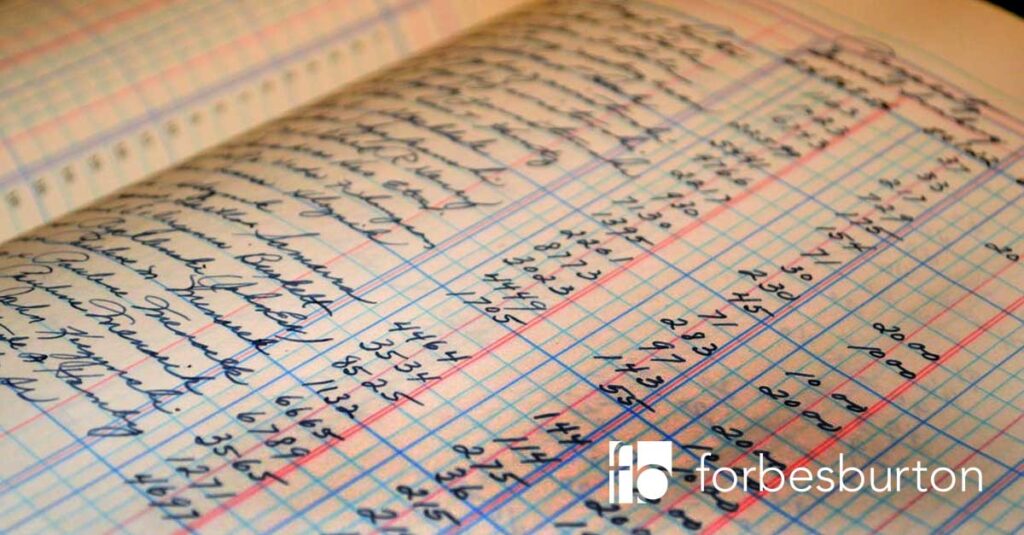
You can have a company bank account, and a personal bank account, but neither of these are the DLA, so, what is a Director’s Loan Account?
Essentially it is a virtual account which only exists in your accounting records. This is a way of keeping a tally of the flow of money between you as an individual and the Limited entity…
Usually, when you set up a Limited company, you need to put money into the bank account before starting to trade; this is accounted for in the Directors Loan Account and it would therefore be in credit, because the money is owed to you as a company creditor.
When the account is in debit, this indicates that you are a debtor of the company (and you owe it money).
Below we’ll go into more detail, also explaining more about overdrawn directors loan accounts
Directors Loan Accounts – the essentials;
A Limited company is legally separate to it’s director – essentially a ‘person’ in its own right. It follows that the company bank account should be treated very differently to your personal bank account.
Purchases that are deemed ‘necessary and wholly and exclusively for the use of the business’, such as suppliers fees and tax, are of course acceptable.
So, what is a Director’s Loan Account (DLA)?
Unfortunately it isn’t uncommon for directors to claim on expenses for inappropriate things such as meals with children’s prices on the receipts.
These expenses are an example of the reasons for a DLA going into debit, this is when it becomes known as an overdrawn directors loan account.
Directors are also allowed to borrow money from the company in the form of a loan providing certain conditions are met.
Need some free advice on your Directors Loan Account?
Knowing what to do if you have an overdrawn Directors Loan Account is hard, that’s why we offer free, no-obligation advice to explore your options.
Call us today for free, confidential advice on 0800 975 0380
What you need to know
If the amount of money that has been taken out of the bank account is more than the amount that has been put in is called a director’s loan.
We should re-iterate here that the company is completely separate to you personally; the company’s money is not yours as a director!
Any director’s (or manager’s) loans must be recorded strictly; amounts that are taken as ‘undeclared dividends’ may result in an overdrawn loan account.
HM Revenue & Customs can demand that the money is paid back promptly, else both your company and your personal finances will be effected.
This is because these amounts are essentially interest free loans from the company bank account, which HMRC don’t deem appropriate.
What if the directors are loaned company money?
The same condition will happen if the directors receive loans from the company to possibly pay for something unplanned with intentions of payback. The funny thing is that it rarely happens.
A director can receive a loan from his company provided that the company is not under financial distress and keep to the rules stated in the Companies Act 2006 and the articles of association of the company.
It’s a must that the shareholders approve loans over £10,000, but not more than £50,000, and the directors must accept the terms of the loads like the term and any interest charged.
The affairs of the director and the company at large can be complicated by taking loans from the company.
It’s more advisable to pay yourselves via PAYE and pay the tax/NIC. It’s possible the company is insolvent and less likely to be viable if it cannot afford to pay you GROSS.
The consequences for you
A Directors Loan Account in debit (you owe the company) of more than £10,000 will be charged as if it were income.
If you have ever been surprised by a high-priced Self-Assessment bill, this may be why if a DLA has been declared on your P11d submission. This is because a tax-free loan is seen as a benefit, so it will be taxed if it has been left overdrawn.
The £10,000 threshold has risen from £5,000 within the last few years, and the rate of tax is determined by HMRC. This figure has currently been lowered to 2.5% – see the list of all beneficial loan arrangement rates here. This figure is based on the amount that you would have paid for a loan from a third party.
Of course, without having to understand these details, the simplest way to avoid personal charges is not to let your Director’s Loan Account be overdrawn (in debit) by more than £10,000 at any point during the tax year.
Overdrawn Director’s Loan Accounts
Every account filed at Companies House makes reference from all overdrawn current accounts concerning loans issued to the director.
It’s mandatory you make efforts to retrieve all loans paid back or reversed in later periods, if you fail to, you will be taxed personally by HMRC on a fairly penal rate.
The truth is, the company cannot pay dividends if there are no distributable reserves available.
So, if at the beginning of the year your company has zero or negative reserves, you must stop taking dividends immediately when you become aware that the company makes no profit.
The accounting term used to describe this is called an “overdrawn directors current account” but usually called a director’s overdrawn loan account.
Any non-existent dividends that cannot cover drawings should not be taken since you are taking money from the company as loan; thus, you owe the company money as a debtor.
The consequences for your company
Additionally, if the DLA is left overdrawn by any amount for more than 9 months from the end of the accounting period, Corporation Tax will be charged. HMRC use a rate of 32.5% on Director’s Loans.
An example:
- Director’s Loan Account stands at £6,000 in debit (overdrawn) at year end, let’s say 31st July
- 9 months and 1 day later on the 1st May, the company will be taxed on the loan if it is still overdue
- £6,000 at 32.5% means that the company will owe £1,950 in Corporation Tax
This amount is refundable once the full loan has been re-paid. However, be aware that this won’t be instantaneous; you will be likely to wait several months for the rebate.
In a nutshell, the only way to avoid company charges is to repay the loan within 9 months from the the year end date.
What action can be taken concerning director’s loans if the company goes into any type of formal insolvency procedure?
Available options to the director in an event like this include:
- Return or repay the debt (director’s debt) you owe the company as a director.
- A process called set off, which has to do with offsetting loans the directors made to the company.
- Receive complete salary but limit the amount of cash you take from the company to offset the loan account gradually. So pay yourself £8,000 each month but take £2,000. Don’t forget to pay tax on the £8,000.
- Make a lot of profits in future periods to permit payment of dividends.
- Restructure the company using a company voluntary arrangement (CVA). For more info about this rescue options, read further).
Typically, loans will have to be repaid within six months.
What happens in a creditors voluntary liquidation?
In order to benefit the company’s creditors, in a creditors voluntary liquidation the liquidator can ask the directors to repay their overdrawn director’s loan account to the company.
Legal action, which can cause the directors to go bankrupts, can be taken against directors to make them pay.
A fictional example situation:
A limited company was set up by Mr. Hargreaves and Mr. Pelham. They made a lot of quick sales based on their contacts/connections, and the business quickly grew to £1,000,000 in sales.
The company’s accountant informed them that the company generated £100,000 net profit just in the first year, and this would be taxed for corporation tax purposes at roughly 20%.
They were advised by the accountant to leave their PAYE salaries at a lesser amount each month in the second year and take dividends from future profits and reserve.
They did this for some years and paid themselves a lot of money as the business made profits each year.
Then something occurred. Their largest debtor went bankrupt, owing the company £160,000.
From your perspective, giving that much to a company was silly, but to them, the company was famous, had a big name and customers, and they never expected the company to fail.
For them, business has been good on a regular, so we understand why it had to be such a big debtor.
The failure of the company led to an unplanned situation. The company, in 2008, had a poor trading year besides customer’s insolvency; thus, they had to write off bad debt.
So they lost a lot of money that year of £250,000. Therefore, they had a negative balance sheet, and they experience the first wave of cash flow crisis creeping in.
They could not take dividends any more, and the directors at the moment had overdrawn directors’ loan accounts that sum up to £50,000 in that year that needs to be repaid.
Insolvency options
From the case study above, if the business entered a formal terminal liquidation such as receivership, administration, compulsory liquidation or voluntary liquidation, then the liquidator or insolvency practitioner could ask the directors to repay the money they owe the company for the creditor’s benefits.
Viability is the main test of any business/company in distress. The fact that the company went through one bad year plus a huge bad debt does not mean it’s bad business.
The company in the above case showed directors and staff that were dedicated.
The best solution we could recommend in a situation like this is a company voluntary arrangement (CVA).
The drawings of the directors for that financial year were addressed as being net pay via the PAYE scheme in that year since there were no distributable profits; thus, they could not pay dividends.
The year before, overdrawn director’s account was paid back to the business in 6 months (a standard requirement by HMRC) by the company directors. Doing this will generate, to some extent, a larger PAYE and NIC liability.
However, the debt would be bound by the process when using the CVA. Alongside the reduction in managers and employees (losing the contract meant they had too many employees), the company was anticipating a modest profit at best, or worst case scenario, just below break-even.
It will benefit creditors as they receive a deal that will repay 55% of their old debt over five years, and they managed to keep their customers.
The company benefits from a lower cost, downsized business, no lost contracts, long term survival. The pressure on cash flow was eliminated while ensuring the bank is still happy.
If they followed this option the directors would be able to prevent:
- Failure business
- Personal liability
- Bank personal guarantees being enforced
In addition, as company owners, they would have employment for a long time and a valuable business in the future.
How can Forbes Burton help you?
We hope that this article has answered the question ‘what is a Director’s Loan Account?’ and cleared up any further queries – although the term Director’s Loan Account is often used freely, there are a lot more consequences to borrowing money from your company than you may have been aware of.
If you or your directors have an overdrawn current account and a business that’s under serious financial pressure, you can reach us on 0800 975 0380 for some free advice.
Author

Ben Westoby
ben.westoby@forbesburton.com
We're here for you.
As a dedicated team of Advisers and Consultants our aim is to help you fix the issues and solve the problems within your business.
Find out more →